The Northern Red Oak (Quercus rubra) is recognized as a significant national treasure for the United States. This old-growth tree is easily distinguished by its immensity, waxy, cracked leaves, attractive acorns, and phenomenal red fall foliage. These magnificent trees grow quickly and provide wonderful shade during the hot summer months.
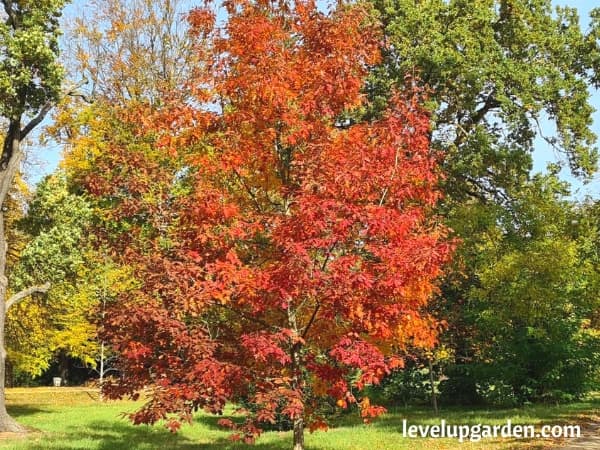
When planted in a neighborhood, park, or along a road, the dense canopy of red oak leaves will keep you cool all summer long. A food source for birds and wildlife such as squirrels and blue jays, the red oak is more than just a beautiful shade tree; it is a major player in the environment. They are trees that are a joy to plant, planting native trees is good for the environment, the air, and the animals.
The Northern Red Oak performs best when planted in a sunny location. It grows very fast, reaching a height of 70 feet and a branch spread of 40 feet. Because of its hard woody texture, this hardy tree has the ability to grow to enormous heights and maintain a long life span.
Adaptability and tolerance make this tree very easy to grow and requires no maintenance once planted. The Northern Red Oak is a classic tree to add to your landscape. It also contributes to the ecosystem and remains loyal for years to come, the Northern Red Oak is an essential part of your landscape.
I. Plant Profile – An Overview of the plant
| Common Name | Northern Red Oak |
| Botanical Name | Quercus rubra |
| Family | Fagaceae |
| Hardiness Zones | 3-8 |
| Mature Height | 50-70 ft. |
| Mature Width | 35-40 ft. |
| Sunlight | Full Sun |
| Soil | Well-drained, sandy, clay soils |
| Growth Rate | Fast |
II. Appearance
It is a very large tree with a straight and tall trunk. It has branches that spread widely and an attractive rounded crown. It has twigs which are long and slender, reddish brown, slightly hairy at first, then becoming smooth and shiny. The buds are reddish in color and fringed with hairs.

The leaves grow in an alternate manner. It looks simple, has a length of 5-9 inches, with 7-11 pointed lobes, lobed halfway up the midrib. The lobes are irregular in size and length, with the upper half of the lobes shorter and wider. The upper surface is smooth and yellow-green, the lower surface smooth with occasional protuberances at the intersection of the veins.
The bark is greenish brown to gray, turning brown to black with age. The grooves are shallow, ridges are broad, and the top is flat with grayish bark that appears striped. The upper bark is coarsely and shallowly fissured with broad, smooth striations, while the lower bark is gray to black with deep grooves.
III. Growing and Care Conditions
Northern Red Oak is quite tolerant of urban weather conditions and high winds. Growing conditions can be expected in hardiness zones 3-8. The tree canopy is excellent under high winds. This tree grows well in these hardiness zones if the soil is favorable, and its primary use is for landscaping purposes.
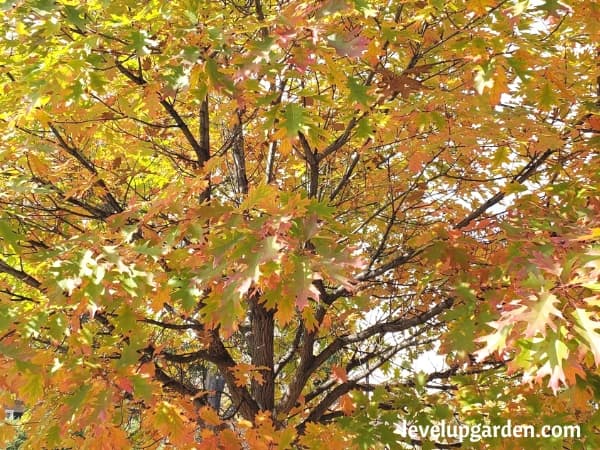
This tree is also native to the North American region and is over 300 years old. It is 100 feet tall and its trunk can reach a diameter of about 4 feet. The tree grows well in moderate to ideally rugged conditions and thrives without competition in these zones.
Planting
Red Oaks should be planted in a location in the garden that receives at least 6 hours of direct sunlight per day. Choose a location that allows enough space for this tree to grow. Avoid areas near power lines or buildings. You want to give this tree at least 50 feet of space.
Dig a hole large enough to accommodate the rootball. Once the tree is planted, step on the soil until it becomes firm. Water the tree thoroughly so that water reaches the roots. Place an appropriate amount of mulch around the base of the tree to retain moisture.
Light
When planting a Northern Red Oak tree, location is very important. You need to find a location that is sunny and has enough space above and below for the tree to grow. The plant should receive at least 6 hours of light per day.
Watering
Water the tree to keep the ground moist. Deep watering once a week is sufficient for a young tree to establish roots. Once the tree has grown, it should be watered only during dry seasons with less than one inch of precipitation per month.
Fertilizer
Fertilize the Northern Red Oak twice a year, in the spring and fall. Nitrogen is the most important nutrient for the healthy growth of this plant, so be sure that the fertilizer you use contains sufficient amounts. Potassium is the next most important nutrient for this tree.
Soil Requirements
The Northern Red Oak grows perfectly in acidic, moist, loamy, well-drained, sandy, and clay soils. Red oak prefers regular moisture, but this tree has some drought tolerance. It is adapted to arid zone soils and has excellent cold tolerance. It also grows well during the winter in cold-tolerant areas.
Pruning
Northern Red Oak is a species that responds well to pruning. While the tree is young, you can prune it yourself using a lopper or hand pruner. In early spring, cut off branches that are dead, dying, or damaged in some way.
When the tree is a bit larger, pruning should be done more carefully. The tree will grow so large that eventually the branches will be too much for it to handle on its own. Keep your mature Northern Red Oak healthy by having your trusted arboriculture team prune it for you.
Pests and Diseases
There are numerous problems that befall Northern Red Oak. The most common problems are oak wilt and root rot. However, northern red oak can also be affected by oak wilt, powdery mildew, and iron chlorosis.
Some of these diseases have no cure, but that does not mean they are inevitable. In fact, many northern red oaks live long, healthy lives as long as they receive the proper conditions and care.
IV. Uses
Northern Red Oak trees have a dense, wide canopy and provide excellent shade. Allow ample space for the oak tree to grow. At 70 feet tall and about 40 feet wide, a large mature red oak tree is quite large. This shade tree is ideal as the main tree in your yard.
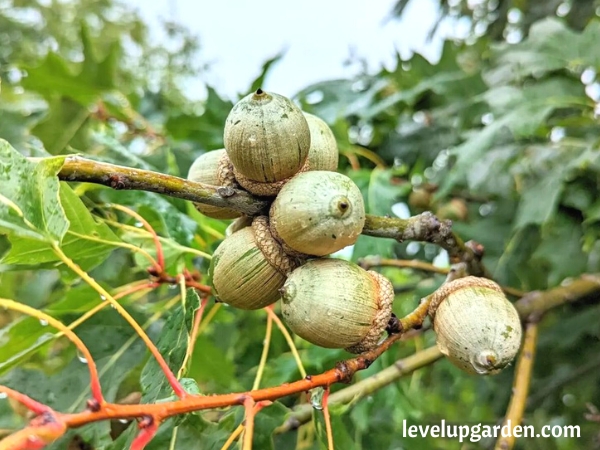
If you have a large yard or lot, you can plant oak trees side by side to provide shade during the summer months. Red oaks give off a rich red color in the fall that will liven up your yard. When planted side by side, they should be spaced at least 10 feet apart.
The Northern Red Oak is also beneficial to wildlife, mainly in the rainforest where the tree is found. The tree provides excellent cover and good resting places for nesting mammals and birds. Many birds, rabbits, moose, and mice feed on the leaves, saplings, and acorns of this tree. The tree is beneficial to large herds of wildlife, especially herbivores.
In the past, people ate the acorns of the Northern Red Oak. These are the ethnobotanical benefits of this tree species: Native Americans in the 19th century ate the acorns of this tree. The bitter part of the tree was only the tannin, which was removed by boiling and leaching them in ashes and soaking them for days. They also buried them during the winter season.
Many tribes found that northern red oak had medicinal properties and used the bark to cure heart disease. It was also used to treat bronchitis and as a wash, disinfectant, and astringent.
A protected use of the Northern Red Oak is for landscaping. In North America and Europe, it is often used as a lawn shade. It is also used primarily in parks, especially in the United States and on golf courses. It is also used by wealthy people for landscaping fields and by Mexicans for haciendas.
The industrial use of northern red oak is in the hardwood industry. Many companies use this species as a raw material for hardwood lumber. This wood is also used for heavy machinery because of its fine grain and finish. It is used for interior wood, cabinets, beds, and other furniture, as well as for flooring. Most tools such as agricultural poles and railroad tiles are made from this variety.
V. Why you should buy this plant
If you are looking for a huge, worry-free shade tree, Northern Red Oak is a great choice. It is long-lasting, incredibly hardy, and fast-growing, this tree is the perfect investment for nearly every American home.
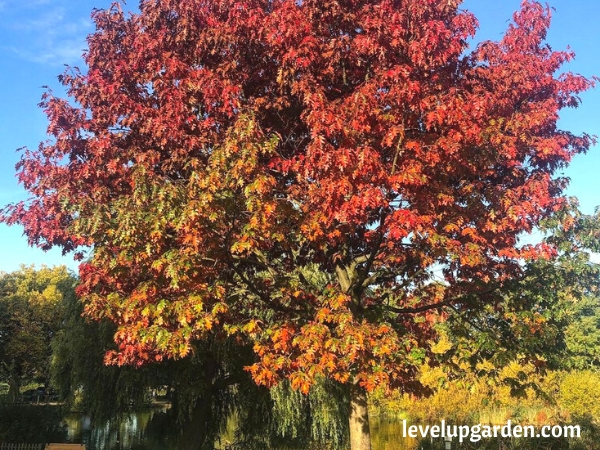
It will grow in even the worst of environments. From open pastures to dense forests to polluted city sidewalks, Northern Red Oak can grow in just about any environment imaginable. The tree can grow just as well in thin soil, tight spaces, wet sand, dry clay, and city air as it can in perfect soil and sprawling pastures.
The Northern Red Oak is a beloved tree. With the honor of being the state tree of New Jersey, this tree is loved throughout the United States. One of the most prolific wood-producing trees, it is often used for cabinetry and hardwood flooring, and homes across America are filled with products made from Northern Red Oak.
Famous for its color and free adaptability, Northern Red Oak trees are long-lasting, extremely hardy, and make shade trees easy to grow. From open meadows to city sidewalks, Northern Red Oak trees grow well.
They can grow in the worst of environments, so climate and living conditions are not a problem. In short, Northern Red grows well in thin soils, compact spaces, wet sand, and city air. Just plant it and watch it grow. Because of its adaptability, it grows rapidly without much attention.
You get a tree that grows easily. Northern red oaks grow more than two feet each year and live for centuries. And they are especially hardy because they are planted and nurtured for months before shipping. This means it has a well-developed, healthy root system that blends easily into the landscape.
The trees provide shelter and resting places for birds and mammals. Squirrels, deer, insects, birds, small rodents, raccoons, and wild turkeys eat acorns. Bears also eat them. Deer eat the leaves and twigs in winter, and the dense canopy provides shade for wildlife.
The tree typically grows more than 2 feet per year for less than 10 years, reaching a height of 100 feet, although 50 to 70 feet is more common. The trunk can be up to two meters in diameter. Red oaks readily sprout from the stumps of previously cut trees, and these sprouts grow rapidly.
In small residential areas, red oaks can grow too large, so keep this in mind when deciding which trees to plant in suburban yards. The canopy can be 40 to 60 feet wide. The large, open canopy makes it easy to grow rapidly. The dark green foliage is effective in blocking the sun in the summer, but deciduous in the winter. It is often planted as a lawn, especially in parks and golf courses.
It is moderately shade tolerant, but is often planted in woodlands with more shade tolerant trees such as sugar maple, beech, and basswood. It is more shade-tolerant than yellow poplar, black cherry, and white ash, but falls somewhere in the middle compared to other oaks.
The charm of the red oak is that it is often planted as an ornamental. It has a beautiful symmetrical form, and its leaves turn bright red in the fall. The branches are attractive and the grooves in the bark are beautiful. It is often used for landscaping.
It tolerates dry and acidic soils well and can withstand adverse conditions to a certain extent. It is one of the best oaks to plant in urban areas because it is more tolerant of these conditions than other oaks.
Red oak wood is durable and suitable for furniture, flooring, veneer, and general construction. It has a characteristic wide grain and is a hard but easily worked wood. It is highly stainable and can be easily polished.
Red oak trees are large and long-lived and, like other oaks, absorb large amounts of carbon dioxide from the atmosphere. They help protect the environment by storing carbon in their trunks and branches and absorbing air pollution.
In addition, its roots extend close to the surface of the ground, making it easier to transplant than other trees. For this reason, red oak trees are often sold in nurseries and garden stores.
Liven up your landscape with these long-lasting trees. And you’ll reap the rewards of a strong, long-lasting, and even more rewarding tree.
VI. FAQs
Where do Red Oak trees grow best?
Red oaks grow best in full sun, but moderate shade is also acceptable. Red oaks grow best in acidic soils with a pH of 4 to 7. It grows best in moist, well-drained loamy soils.
How long does a Red Oak tree live?
The bark is brownish-gray, turning dark brown in old growth. The lifespan of a red oak tree is 500 years, but it usually lasts about 300 years.
How tall is a 5-year-old oak tree?
It can grow about 18 inches per year. So after 5 years it should be about 90 inches, or about 7.5 feet. If you really want to be sure how tall an oak tree is, you need to know what kind of tree it is.
What animals live in oak trees?
Possums live in the branches of tall trees and can defend themselves from predators below. Foxes and other large mammals nest in hollows beneath oaks. Hundreds of species of birds nest in the high branches of oak trees.
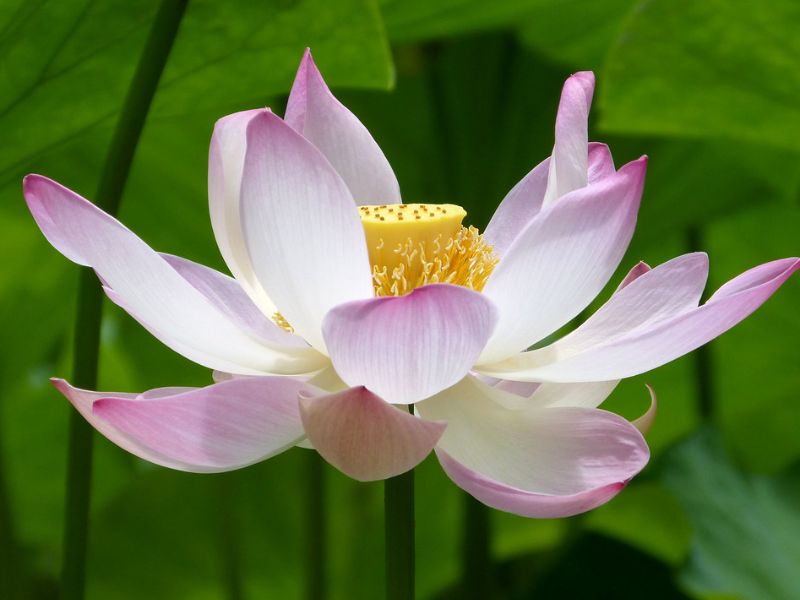
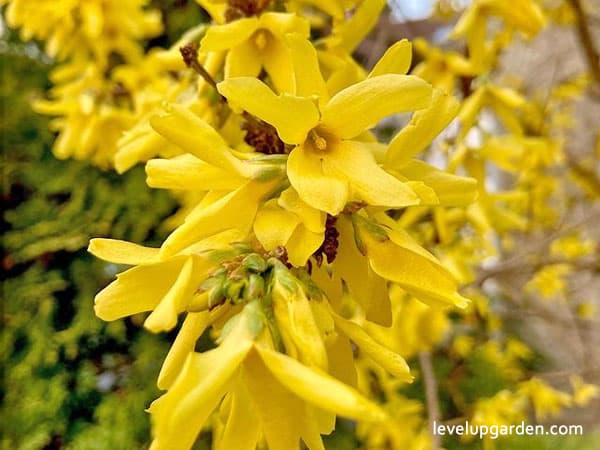






17 responses to “Northern Red Oak Tree (Quercus rubra)”